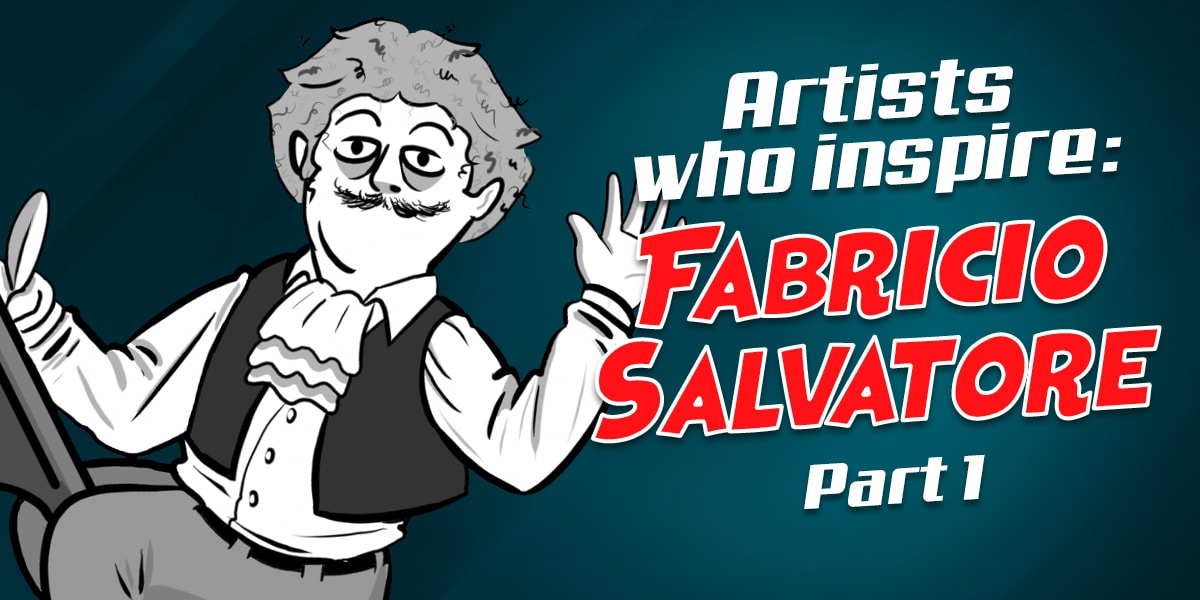Interview with Fabricio Salvatore (Part 1): The Art of Adapting Reality to Comics
Have you ever wondered how a graphic novel based on real events is created? What challenges does an artist face when transforming history into panels? Get ready to immerse yourself in the fascinating world of comic creation with an emerging young talent. In this exclusive interview, Fabricio Salvatore, at just 24 years old, opens the doors to his creative process and reveals the secrets behind his first graphic novel. From his beginnings as an illustrator to the ethical dilemmas of adapting a true story, this article will take you on an inspiring journey through the universe of comics. Don’t miss a single detail of this fascinating conversation!
From Childhood Sketches to Sequential Art: The Evolution of a Promising Talent
Welcome to an unprecedented visual adventure! Today we have the privilege of delving into the creative mind of Fabricio Salvatore (@fabricioposting), a 24-year-old artist who has just launched his first graphic novel. This work, based on the enigmatic story of Kaspar Hauser, not only marks Fabricio’s debut in the world of professional comics but also invites us to reflect on the power of sequential art to bring historical narratives to life.
In this exclusive interview, Fabricio will guide us through his creative process, sharing the challenges and joys of developing an extensive comic. We’ll discover how he balances historical accuracy with artistic freedom, and explore the responsibility that comes with working with real facts in the comic format. Are you ready to unravel the secrets behind the creation of a graphic novel? Join us on this fascinating journey to the heart of sequential art!

From Childhood Scribbles to Visual Narratives: The Birth of an Artist
Like many great artists, Fabricio’s story begins with a child and a pencil. “I think I’m very much in favor of the idea that all artists are actually people who weren’t given much importance as kids, and who sublimated it into drawing a lot,” Fabricio reflects. This perspective invites us to reconsider how childhood passions can blossom into professional careers when cultivated with dedication and perseverance.
Fabricio’s path to the world of comics wasn’t direct. Initially, he entered the Faculty of Arts intending to become a classical artist. However, he soon discovered that his true passion lay in comics. “I leaned more towards comics because it seemed like a more popular and easier medium to convey a message,” he explains. “Comics reach more people than what you might find in a museum, with all due respect to museums and art with a capital A.”
This reflection by Fabricio underscores the unique power of comics as a medium of communication and artistic expression. Its ability to combine images and text in an accessible way makes it a powerful tool for storytelling and conveying complex ideas. If you also feel you have a message to share through drawing, click here to explore techniques that will help you convey your ideas in a visually impactful way.

Kaspar Hauser: When History Comes to Life in Panels
Fabricio’s latest creation, titled “Kaspar Hauser,” delves into the depths of a fascinating historical case known as “the enigma of Kaspar Hauser.” This story, set in 1828 in Nuremberg, narrates the life of a 17-year-old boy who lived locked in a basement until that age. “From one day to the next, he is freed and comes out into the world knowing nothing about anything,” Fabricio explains. “So he undertakes a biological, semiotic, linguistic, and psychological exploration, facing many problems that all of this entails.”
Adapting a true story to a graphic novel presents unique challenges that Fabricio approached with meticulousness and respect. “I’d say I was respectful of the documentation. My main visual source was Herzog’s film, which has the same name,” he comments. “When watching it, I paid close attention to the clothes, the shots, and especially the interiors. I tried to be super respectful because I was telling a real story.”
This commitment to historical authenticity demonstrates the seriousness with which Fabricio approaches his art. The attention to detail in clothing, architecture, and environments not only enriches the narrative but also transports the reader to 19th-century Nuremberg. If you’re fascinated by the idea of recreating past eras through drawing, click here to discover resources that will help you perfect your research and historical representation skills.

Between Reality and Fiction: The Delicate Balance of Historical Comics
One of the most intriguing aspects of Fabricio’s work is how he handles the delicate balance between historical accuracy and creative freedom in his work. “In the story, I tried to be as respectful as possible, for ethical reasons, because it’s a real and very tragic case,” he explains. This approach demonstrates artistic maturity and admirable ethical awareness in such a young creator.
However, Fabricio also recognizes the importance of artistic expression and the occasional need to take certain creative liberties: “The freedom I take is very limited. It’s two pages long and very obvious, that is, there’s only one very metaphysical moment in the story, where it’s clear that this couldn’t have been like this.” This decision to include a “metaphysical” moment in the narrative underscores Fabricio’s ability to balance respect for historical facts with the need to create a captivating reading experience.
This approach demonstrates the complexity of adapting real stories to the comic format, where the artist must navigate between historical accuracy and the need to create a visually engaging narrative. If you’re intrigued by this creative process and want to learn more about how to tell stories through drawing, click here to explore visual storytelling techniques that will elevate your skills as a graphic storyteller.

Beyond Kaspar: New Horizons in the Comic Universe
Fabricio’s creative spirit knows no bounds. He’s currently embarking on a new project that wonderfully contrasts with the historical rigor of “Kaspar Hauser.” “It’s a medieval fantasy comic, and while there are no country names, no names or geographical locations, I use a lot of documentation of real armor,” he reveals enthusiastically.
This new project is a testament to Fabricio’s versatility as an artist, demonstrating his ability to fuse fantastic elements with meticulously researched historical details. “In the comic I’m starting to put together, there are ogres, there are orcs, there’s everything you can imagine from that world, but they use 15th-century Italian armor with the ornamentation of that era,” he explains, painting a vivid picture of a world where fantasy and history intertwine in a fascinating way.
This unique fusion of fantastic elements and historical reality offers a fresh and captivating approach to creating imaginary worlds. Fabricio demonstrates that even in the realms of fantasy, attention to detail and historical research can add a layer of authenticity and richness to the visual narrative. If you feel inspired by this idea and want to learn how to create your own fantasy universes with a touch of historical authenticity, click here to discover resources that will help you develop your unique style in creating fantasy worlds.

The Future of Comics: A Look Through the Eyes of a Young Master
Our conversation with Fabricio Salvatore has offered us a fascinating look at the creative process behind adapting real stories to the graphic novel format. From his humble beginnings as a child with a pencil to becoming an artist capable of bringing both historical characters and fantastic creatures to life, Fabricio has guided us through his artistic journey with a captivating mix of passion, honesty, and creative vision.
His meticulous approach to historical research, combined with his ability to infuse moments of creativity and fantasy, demonstrates the immense potential of comics as a medium for telling complex and multifaceted stories. Whether adapting the enigmatic life of Kaspar Hauser or creating a world of medieval fantasy with touches of historical authenticity, Fabricio shows us how sequential art can be a bridge between the past and imagination, between the real and the fantastic.
This interview has not only given us an intimate view of the creative process of a young and talented artist but has also inspired us to reflect on the future of comics as an art form and medium of communication. Fabricio’s work suggests a bright future for the medium, where rigorous research combines with boundless imagination to create works that educate, entertain, and challenge readers alike.
If you also feel the call of sequential art and want to explore your potential as a comic creator, whether to tell real stories or bring fantastic worlds to life, don’t hesitate to take the next step in your artistic journey by exploring our specialized resources here. Remember, every great artist started with a simple stroke, and with dedication, passion, and the right tools, you too can turn your creative dreams into reality.
Don’t miss the second part of this fascinating interview, where Fabricio will reveal more secrets about his work process, the materials he uses, and his recommendations for must-read comics! Get ready to dive even deeper into the world of comics and discover how you can develop your own style and artistic voice in this exciting medium.



